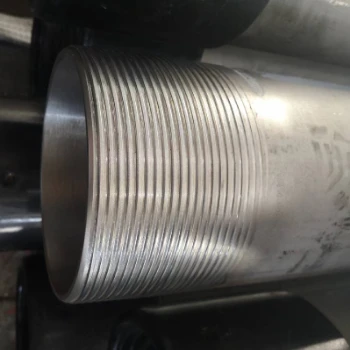- Afrikaans
- Albanian
- Amharic
- Arabic
- Armenian
- Azerbaijani
- Basque
- Belarusian
- Bengali
- Bosnian
- Bulgarian
- Catalan
- Cebuano
- Corsican
- Croatian
- Czech
- Danish
- Dutch
- English
- Esperanto
- Estonian
- Finnish
- French
- Frisian
- Galician
- Georgian
- German
- Greek
- Gujarati
- Haitian Creole
- hausa
- hawaiian
- Hebrew
- Hindi
- Miao
- Hungarian
- Icelandic
- igbo
- Indonesian
- irish
- Italian
- Japanese
- Javanese
- Kannada
- kazakh
- Khmer
- Rwandese
- Korean
- Kurdish
- Kyrgyz
- Lao
- Latin
- Latvian
- Lithuanian
- Luxembourgish
- Macedonian
- Malgashi
- Malay
- Malayalam
- Maltese
- Maori
- Marathi
- Mongolian
- Myanmar
- Nepali
- Norwegian
- Norwegian
- Occitan
- Pashto
- Persian
- Polish
- Portuguese
- Punjabi
- Romanian
- Russian
- Samoan
- Scottish Gaelic
- Serbian
- Sesotho
- Shona
- Sindhi
- Sinhala
- Slovak
- Slovenian
- Somali
- Spanish
- Sundanese
- Swahili
- Swedish
- Tagalog
- Tajik
- Tamil
- Tatar
- Telugu
- Thai
- Turkish
- Turkmen
- Ukrainian
- Urdu
- Uighur
- Uzbek
- Vietnamese
- Welsh
- Bantu
- Yiddish
- Yoruba
- Zulu
ss pipe coupling
Understanding SS Pipe Coupling A Comprehensive Overview
In the realm of industrial piping systems, the importance of reliable connections cannot be overstated. One such essential component that facilitates the seamless joining of pipes is the SS (Stainless Steel) pipe coupling. These couplings play a pivotal role in ensuring efficient fluid transfer while maintaining the integrity and durability of the piping system. This article delves into the characteristics, types, applications, and benefits of SS pipe couplings.
What is SS Pipe Coupling?
SS pipe couplings are specialized fittings designed to connect two sections of piping or tubing securely. Made from stainless steel, known for its corrosion resistance and strength, these couplings are suitable for various applications across different industries. Stainless steel is an alloy primarily consisting of iron, carbon, and a minimum of 10.5% chromium, which impacts its resistance to oxidation and rust. The composition of stainless steel allows it to withstand extreme temperatures and pressures, making it an ideal choice for tough environments.
Types of SS Pipe Couplings
SS pipe couplings come in various types, each serving unique purposes. Here are a few common types
1. Slip Couplings These are designed to connect two pipes of the same diameter. They allow for easy movement and alignment during installation and repair work.
2. Reducer Couplings Used to connect pipes of different diameters, reducer couplings ensure a seamless transition from a larger pipe to a smaller one, which is often necessary in fluid transport systems.
3. Threaded Couplings Featuring internal threads, these couplings are ideal for connecting male and female threaded pipes. They allow for easy assembly and disassembly, making them convenient for maintenance.
4. Weldolets and Outlets These specialized couplings integrate seamlessly into a piping layout, allowing for the connection of auxiliary lines without compromising the integrity of the main pipe.
5. Union Couplings Unions are used to create detachable connections between pipes. They allow for quick assembly and disassembly without requiring additional tools.
Applications of SS Pipe Couplings
The versatility of SS pipe couplings means they find applications in numerous sectors, including
ss pipe coupling

- Oil and Gas Industry SS couplings are vital for pipeline systems transporting crude oil and natural gas, where they withstand harsh environmental conditions.
- Water Treatment Plants In these facilities, the durability and corrosion resistance of stainless steel ensure long-lasting connections for water transport.
- Food Processing Hygiene is paramount in food production. SS couplings meet stringent sanitary standards, ensuring products remain free from contamination.
- Chemical Processing The resistance to corrosive chemicals makes SS couplings ideal for chemical plants where various substances are handled.
Benefits of Using SS Pipe Couplings
1. Corrosion Resistance The primary advantage of using stainless steel is its ability to resist corrosion and rust, ensuring longevity and reducing maintenance costs.
2. Strength and Durability SS couplings are robust and can withstand extreme conditions, including high pressure and temperatures.
3. Versatile With multiple configurations and sizes, SS couplings can adapt to various piping requirements across industries.
4. Ease of Installation Many SS couplings allow for easy installation and disassembly, which is beneficial in maintenance-heavy environments.
5. Aesthetic Appeal Their shiny, sleek surface not only looks good but also reflects hygienic processes, especially in food and pharmaceutical applications.
Conclusion
In summary, SS pipe couplings are indispensable components in modern piping systems. Their strength, durability, and resistance to corrosion make them suitable for a wide range of applications in various industries. As technology progresses, these fittings continue to evolve, providing solutions that enhance efficiency and reliability in fluid transfer. Understanding these components is crucial for engineers, maintenance teams, and industry professionals aiming to ensure the longevity and effectiveness of their piping systems.
-
Tubing Pup Joints: Essential Components for Oil and Gas OperationsNewsJul.10,2025
-
Pup Joints: Essential Components for Reliable Drilling OperationsNewsJul.10,2025
-
Pipe Couplings: Connecting Your World EfficientlyNewsJul.10,2025
-
Mastering Oilfield Operations with Quality Tubing and CasingNewsJul.10,2025
-
High-Quality Casing Couplings for Every NeedNewsJul.10,2025
-
Boost Your Drilling Efficiency with Premium Crossover Tools & Seating NipplesNewsJul.10,2025







